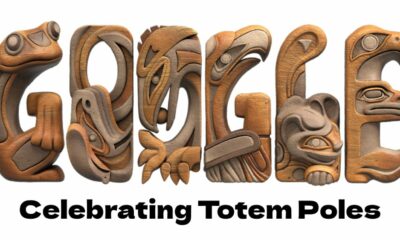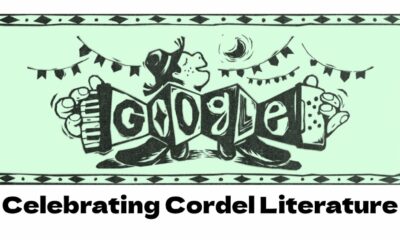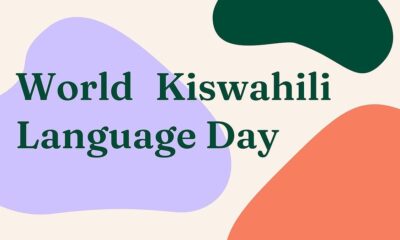Lifestyle
Google Doodle Celebrates Iboshi Hokuto, an Ainu Poet and Social Activist
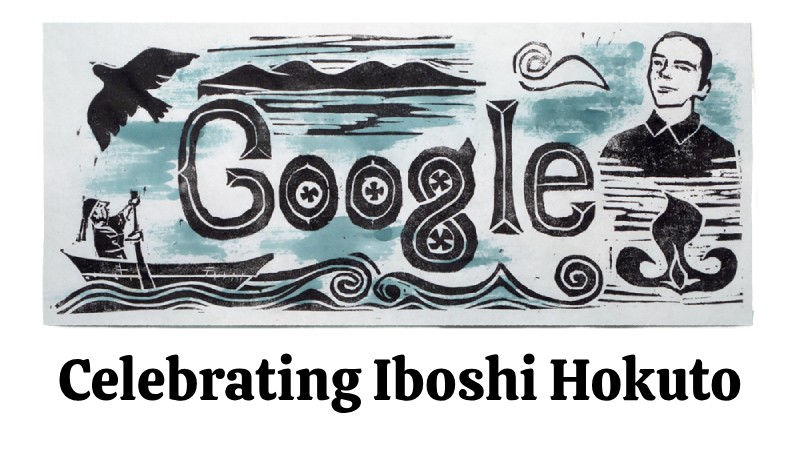
Iboshi Hokuto (違星 北斗), an Ainu poet and social activist who wrote numerous tanka and haiku that aimed to enhance people’s perceptions of the Indigenous people of Hokkaido, is honored in today’s Google Doodle. On October 3, 1927, a 31-syllable poem from Hokuto’s tanka was published in the Otaru Shimbun, a major Japanese newspaper. Today’s Google Doodle features ocean landscapes and common aspects of Ainu life and culture in woodblock print, represented by Japan-based guest artist Koji Yuki.
Iboshi Hokuto spent his entire life working to grow the Ainu people’s standing. He did this by writing tanka for newspapers and magazines and influencing the young Ainu community of the time. He also went around Hokkaido’s Ainu kotan (villages), preaching about the importance of unity and developing an Ainu identity.
One of the “Three Great Ainu Poets” (アイヌ三大歌人) is Iboshi, along with Yaeko Batchelor and Takeichi Moritake [ja]. He is often referred to as the “Takuboku of the Ainu.”
Hokuto, the third son of his father Jinsaku, and mother Haru, was born in the first district of Ōgawa-chō, Yoichi, in 1901.
In contrast to most Indigenous Ainu children in his community, he attended Jinjō Elementary School. He experienced frequent and severe discrimination in school as a result. Iboshi Hokuto created a strong sense of pride in his culture despite the difficulties.
Iboshi Hokuto became interested in concepts of culture and character after being influenced by his former schoolteacher, Naoya Nara. He became involved in youth groups and tried to get along with the Japanese. He concluded that the Ainu needed to develop their own cultural awareness as well as a consciousness of their status as Japanese nationals. He also came to the conclusion that the Ainu needed to develop both excellent people and a society that would help the Japanese and society as a whole.
Iboshi Hokuto (違星 北斗) was also conscripted as a logistics officer in the Imperial Japanese Army’s 7th division in 1923, but he was let go after a little more than a month, possibly due to illness.
He became a member of youth groups and eventually established his own cultural group, Chawashō Gakkai (茶話 学会). To raise awareness for Ainu causes, this group held study sessions and published a bulletin titled Chawashi (茶話誌). He also went to poetry events and sent some of his work to a magazine that published poetry.
Iboshi Hokuto became a devoted reader of Mitsujirō Nishikawa’s culture magazine Jidō Dōwa (自働道話) by Nara’s introduction. During Nishikawa’s visit to Hokkaido, Iboshi also met Nishikawa in person.
It was additionally close to this time that Iboshi started creating haiku under the tutelage of Nara and the newly appointed teacher Kenji Yoshida. He began submitting his work to the Tokyo poetry magazine Nihihari and took part in gatherings of haiku poets in Yoichi.
In 1925, Hokuto moved to Tokyo where he joined academic groups and gave lectures at the Tokyo Ainu Conference (東京アイヌ学会). He realized, after a year and a half, that his activism was more needed at home. He published the literary magazine Kotan, worked at a kindergarten in Biratori, and wrote poetry while living in Yoichi.
Iboshi Hokuto was honored by Bonsei Namiki on October 3, 1927, and the Otaru Shimbun first published one of his tanka. He continued to publish tanka, essays, and research in that newspaper after this. He met the Otaru poets, including Bonsei Namiki and Shōji Inabata, at a gathering of poets in Yoichi on November 3. He developed a friendship with them after receiving praise and admiration. He also began making significant contributions to their brand-new poetry periodical, Shin Tanka Jidai (新短歌時代).
One of his tanka was soon published in a newspaper, paving the way for additional poetry placements. Hokuto rose to prominence in the Otaru Shimbun newspaper. His work frequently depicted his pride in his Ainu heritage and discussed his struggle with tuberculosis.
Iboshi Hokuto continued to attract attention as a poet by publishing tanka nearly every week in the Otaru Shimbun and having a special edition of the Sapporo poetry magazine Shizuku (志づく) devoted to a collection of his works. This issue is the only reasonably complete collection of his works that was made available during his lifetime.
The Ainu Association of Hokkaido was appropriately named when the first unified association of Hokkaido was established in July 1931. Iboshi had had an impact on many of its founding members, and the movement he had risked his life for finally took form.
Today, Iboshi Hokuto (違星 北斗) is known as one of the “three great Ainu poets,” and in front of the Yoichi Fisheries Museum is a monument bearing his poetry. Iboshi Hokuto, thank you for your insightful writing and endless activism for the Ainu community!
-
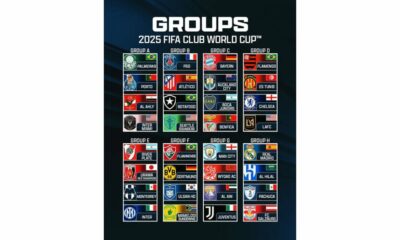
 Sports4 weeks ago
Sports4 weeks agoFIFA Club World Cup 2025: Complete List of Qualified Teams and Groups
-

 Sports3 weeks ago
Sports3 weeks agoAl Ahly vs Inter Miami, 2025 FIFA Club World Cup – Preview, Prediction, Predicted Lineups and How to Watch
-
Health2 weeks ago
Back to Roots: Ayurveda Offers Natural Cure for Common Hair Woes
-

 Tech2 weeks ago
Tech2 weeks agoFrom Soil to Silicon: The Rise of Agriculture AI and Drone Innovations in 2025
-

 Sports4 weeks ago
Sports4 weeks agoFIVB Men’s Volleyball Nations League 2025: Full Schedule, Fixtures, Format, Teams, Pools and How to Watch
-

 Startup3 weeks ago
Startup3 weeks agoHow Instagram Is Driving Global Social Media Marketing Trends
-

 Sports3 weeks ago
Sports3 weeks agoWorld Judo Championships 2025: Full Schedule, Date, Time, Key Athletes and How to Watch
-

 Sports2 weeks ago
Sports2 weeks agoFIBA 3×3 World Cup 2025: Full Schedule, Preview, and How to Watch



